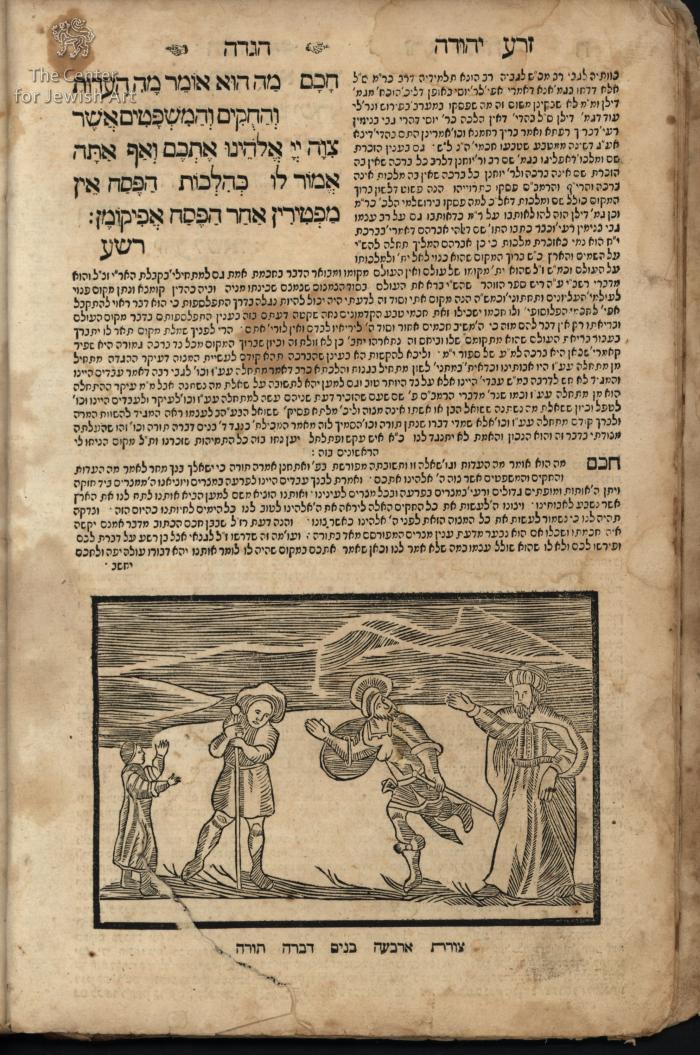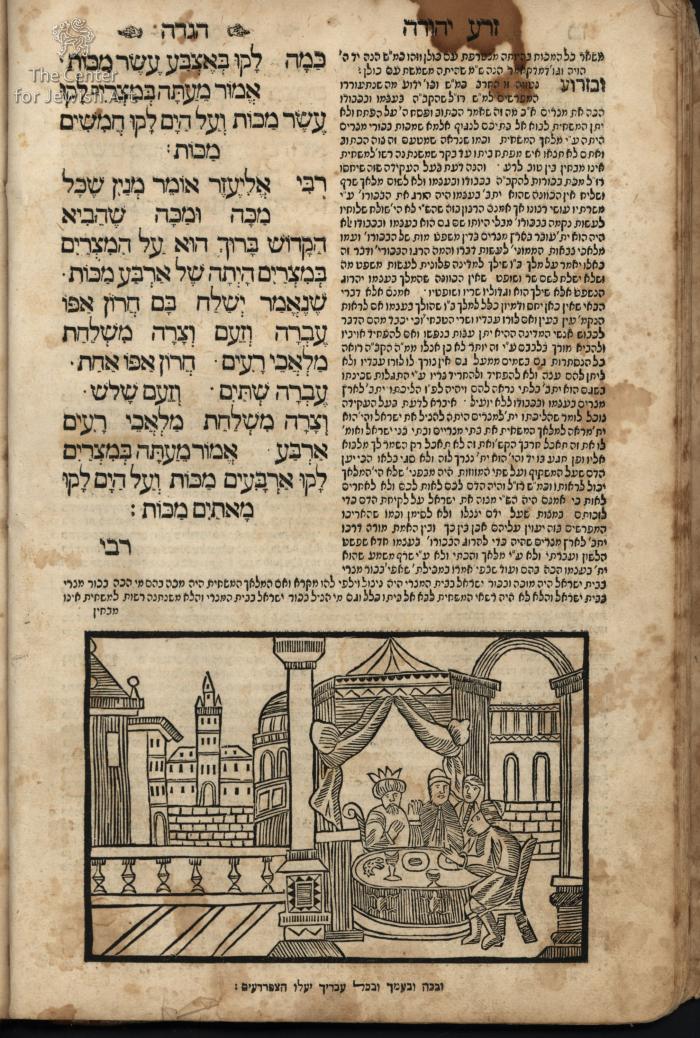Obj. ID: 35907 Haggadah shel Pesach, Offenbach, 1721

sub-set tree:
This text was prepared by William Gross:
Printed in Offenbach, this German Haggadah contains illustrations copied from the Amsterdam Haggadah. While derivative versions of the Amsterdam Haggadah’s pictorial cycle were already becoming popular (as seen in Haggadot from Frankfurt, Sulzbach and Amsterdam), the Offenbach series differs in one important way: it was executed in the venerable woodcut technique rather than with the new copperplate engraving. On the one hand technically regressive, this Haggadah’s use of woodcuts infuses its pictures with an entirely different aesthetic and spirit than its model. As there is no attempt to slavishly copy the originals, the woodcut cycle is an entirely new and fresh creation. Interestingly enough, the anonymous artist of this cycle apparently consulted not only the illustrations of the Amsterdam Haggadah, but also that Haggadah’s own source, the Merian Bible (or a copy thereof).
The Haggadah’s frontispiece may be seen on a number of publications from the Hebrew press of Offenbach. It shows an architectural gateway flanked by Moses and Aaron, and, above, a zodiac wheel supported by two cherubim.
The Offenbach Haggadah of 1722 represents something of an anomaly. It attempts to reproduce all the Amsterdam illustrations-and yet it does so, not by means of engraved plates, but by the venerable method of woodcuts. Aesthetically the results are a new creation. Precisely because the medium is a different one, and because there is no attempt at an exact "facsimile" copy of the Amsterdam illustrations, the Offenbach Haggadah infuses its models with a different spirit. To modern tastes the primitive woodcuts of Offenbach may well appear more forceful than their Amsterdam prototypes.
Recorded on the title page are the pertinent details concerning the text and printing of the new edition. The Haggadah is accompanied by a scholarly commentary entitled Zera Judah. The book was published by Israel ben Moses (who was also the printer), at the press of a gentile, Bonaventura de la Naye.


















